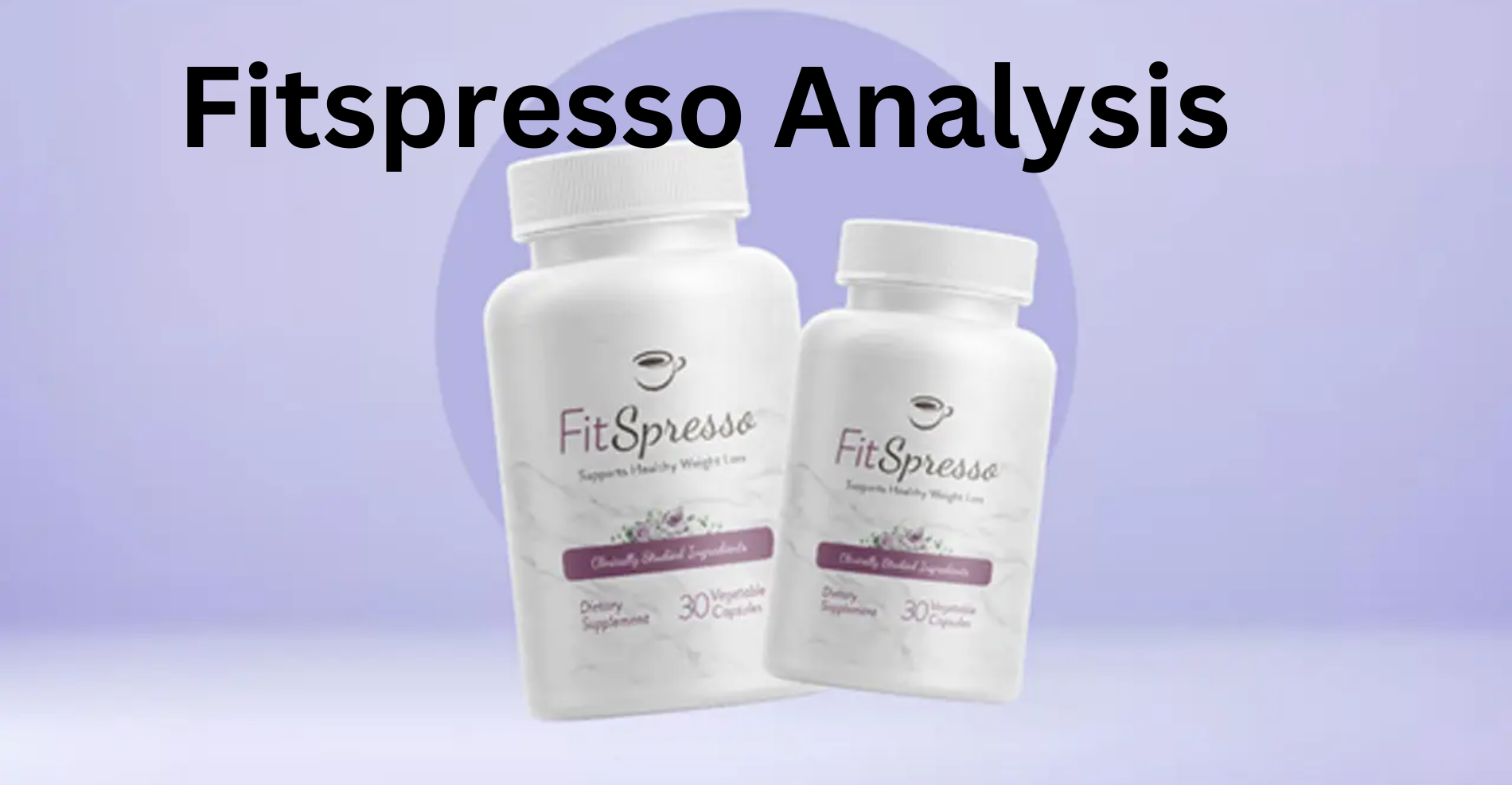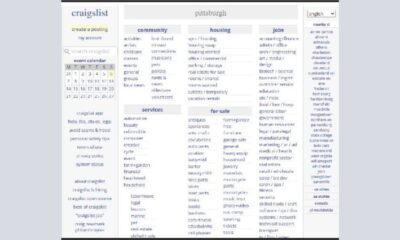Food
Fitspresso Analysis: Revolutionizing Coffee Insights and Customer Experience

Understanding Fitspresso Data
Fitspresso Analysis collects a number of metrics related to coffee consumption and physical activity. Metrics like caffeine use, sleep patterns, heart rate variability, and espresso shots drank are part of this.
Wearable fitness trackers, such as Fitbit, record the user’s physiological reactions to their daily activities and can provide the data used in Fitspresso Analysis. Also, by documenting brewing settings and consumption habits, contemporary espresso machines with data monitoring capabilities add to the information
Benefits of Fitspresso Analysis
There are several benefits to using Fitspresso Analysis. A better coffee experience for everyone may be achieved when companies take the time to study consumer habits and use that information to improve their products.
In addition, coffee shops may tailor their interactions with customers using Fitspresso Analysis. Cafes may increase customer happiness and loyalty by catering to customers’ caffeine sensitivity, which impacts their ability to sleep and energy levels.
Tools for Conducting Fitspresso Analysis
Fitspresso analysis requires certain instruments and machinery for its execution. Fitness and coffee consumption data is mostly derived from Fitbit trackers, which record important parameters all day long.
Fitspresso Analysis relies heavily on both wearable devices and espresso machines that have data tracking capabilities built in. Brewing data like water temperature, pressure, and extraction time are recorded by this equipment, which tells us a lot about the coffee’s flavor and how it was prepared.
Challenges in Fitspresso Analysis
Fitspresso analysis has its share of problems, despite the fact that it could be useful. Data dependability and accuracy are two of the main issues. The data obtained may not be accurate due to wearable technology’s limitations and individual variability in caffeine reactions.
Fitspresso Analysis also has serious privacy concerns. In order to keep users’ confidence and stay in accordance with privacy requirements, it is crucial to gain their consent and implement suitable data protection procedures while dealing with sensitive health and lifestyle data.
Case Studies of Successful Fitspresso Implementations
In order to boost consumer involvement and spur innovation, a number of companies have used Fitspresso analysis. Café X, a well-known coffee shop chain, uses Fitspresso data to make individualized coffee suggestions for clients according to their fitness objectives and tastes, thereby strengthening their relationship with the consumers.
Coffee Roastery Y also uses Fitspresso Analy’sis to enhance the roasting process. The roastery improves the consistency and taste refinement of its coffee offerings by linking brewing parameters with sensory assessments and customer input. This leads to higher customer satisfaction and brand loyalty.
Future Trends in Fitspresso Analysis
Fitspresso Analy’sis has great potential for the future. The combination of Fitspresso data with predictive analytics holds great potential to further disrupt the coffee market, thanks to developments in AI and ML. Staying ahead of the curve and delivering unique value to consumers is possible when firms foresee consumer trends and optimize product development and marketing tactics.
Fitspresso Analy’sis is also well-positioned to get into the home coffee brewing market, which is currently untapped by the company. Consumers’ growing interest in health and technology, along with their desire for individualized coffee experiences, will propel the use of Fitspresso-enabled home espresso machines and smartphone apps.
Conclusion
Fitspresso Analysis is a revolutionary method for deciphering the complex web of connections between coffee intake, physical fitness, and individual health. Through the utilization of data analytics, companies may tap into untapped potential for growth, consumer engagement, and innovation in the cutthroat coffee industry. Fitspresso Analy’sis has the potential to revolutionize coffee culture with each shot as technology keeps getting better.
FAQ’s
What distinguishes Fitspresso Analysis from traditional coffee market research?
By integrating real-time data on coffee consumption and fitness activities, Fitspresso Analy’sis offers a comprehensive perspective on consumers’ lifestyles and preferences. Using real behavior and physiological responses, Fitspresso Analy’sis provides objective insights as opposed to the subjective approaches used in traditional market research, such as focus groups and surveys.
How can businesses address privacy concerns associated with Fitspresso analysis?
Businesses should make data security and transparency their top priorities to address privacy concerns. This involves doing things like following data protection rules like GDPR and CCPA, establishing strong encryption and access restrictions, and getting users’ permission before collecting and analyzing their data.
What are some potential applications of Fitspresso Analysis beyond the coffee industry?
Although the coffee business is the primary user of Fitspresso Analy’sis, the concepts and methodology it employs have broad applicability, including the health and wellness, food and beverage, and exercise industries. Data analytics modeled after Fitspresso, for instance, may improve product development across a number of consumer goods sectors as well as guide the creation of individualized dietary regimens and exercise programs.
How can individuals benefit from Fitspresso analysis in their daily lives?
Fitspresso Analy’sis can help people understand their caffeine sensitivity, coffee intake patterns, and fitness objectives. Individuals may enhance their health, productivity, and energy levels by monitoring their Fitspresso statistics and making educated decisions regarding their coffee use.
Is Fitspresso Analysis accessible to small businesses and coffee enthusiasts?
The widespread availability of reasonably priced data tracking technologies and wearable fitness equipment is making Fitspresso Analy’sis more accessible to small companies and coffee consumers. Fitspresso Analy’sis can help even the most inexperienced coffee drinker improve their brewing methods and get more flavor out of their beans with the correct knowledge and equipment.
Food
2048 Cupcakes

Does your sweet craving coincide with your love of puzzle games? If that’s the case, you’re going to love 2048 Cupcakes! This charming update on the original 2048 game swaps out the digits for cupcakes, making it both aesthetically pleasing and tough. Starting with the fundamentals and on to more complex techniques, this article will cover everything you need to understand about 2048 Cupcakes. Alright, let’s begin!
What is 2048 Cupcakes?
Origins of the Game
Gabriele Cirulli developed the original 2048 game in 2014, and 2048 Cupcakes is a spinoff of that game. It didn’t take long for the original game to become a hit because of how easy it was to pick up and play. This success served as inspiration for the makers of 2048 Cupcakes, who added a whimsical touch by substituting cupcake graphics for the numbers.
Basic Gameplay Mechanics
A sliding puzzle game, 2048 Cupcakes is an exact replica of the original. You can only attain the ultimate cupcake by combining cupcakes of the same kind to make new, higher-level cupcakes. The game is played on a 4×4 grid, and with each move, a fresh cupcake emerges in an empty position on the grid.
How to Play 2048 Cupcakes
Game Controls and Interface
The rules of 2048 Cupcakes are simple. You may guide the cupcakes in the appropriate direction by swiping on a mobile device or using the arrow keys on a keyboard. Two cupcakes of the same level will combine into one when they hit each other. When all viable movements have been exhausted, the game terminates
Objective of the Game
The main goal is to merge lower-level cupcakes to achieve the maximum possible cupcake level. It may seem easy, but you’ll need to plan your movements intelligently to prevent the grid becoming filled up too soon.
Cupcake Levels and Their Visual Appeal
Description of Different Cupcakes
Different kinds of cupcakes, each more aesthetically pleasing than the last, symbolize each level in 2048 Cupcakes. You may start with a basic vanilla cupcake and work your way up to more complex, icing-laden treats.
Evolution of Cupcakes in the Game
Cupcakes take on a more ornate and vibrant style as you go through the game. An aesthetically appealing visual motivation to continue playing and unlocking higher levels is the more detailed and enticing cupcake.
Tips and Strategies for Success
Basic Tips for Beginners
Plan Ahead: Don’t make random moves. Think about where each cupcake will land.
Focus on Corners: Try to keep your highest-level cupcake in a corner to build around it.
Avoid Filling the Grid: Keep spaces open for new cupcakes to appear.
Advanced Strategies for High Scores
Build Chains: Create opportunities to merge multiple cupcakes in one move.
Control the Grid: Manage the appearance of new cupcakes by controlling empty spaces.
Practice Patience: Sometimes the best move is to wait and plan your next series of moves.
Why 2048 Cupcakes is Addictive
The Psychology Behind the Game
The game 2048 Cupcake takes use of the fact that people like games that include pattern recognition and goals. Achieving new levels and combining cupcakes gives gamers a feeling of success, which keeps them coming back for more.
Comparison with Original 2048 Game
Although 2048 is already a very addicting game, 2048 Cupcake takes it to the next level with its eye-catching visuals. Players are motivated to keep playing by the vibrant cupcakes and the anticipation of seeing the next tasty creation.
Benefits of Playing 2048 Cupcakes
Cognitive Skills Enhancement
A player’s problem-solving, strategic-thinking, and spatial-awareness abilities may all be honed by playing 2048 Cupcake. Playing this game will force you to think strategically and plan ahead.
Stress Relief and Relaxation
Twenty48 Cupcakes is a great way for a lot of people to unwind and have fun. A terrific way to relax at the end of a hard day, thanks to its easy-to-understand gameplay and beautiful graphics.
Challenges in 2048 Cupcakes
Common Mistakes and How to Avoid Them
Overcrowding the Grid: Always keep at least one empty space open.
Random Moves: Each move should be part of a larger strategy.
Ignoring Corners: Use corners to your advantage to control the board.
The Most Difficult Cupcake Combinations
It becomes a lot tougher as you go through the stages. Avoiding circumstances when no further movements are feasible and controlling the restricted area are the most tough parts.
2048 Cupcakes for Different Age Groups
Why Kids Love It
The bright colors and whimsical pattern of the cupcakes immediately catch the eye of children. This game is perfect for younger players who want a good challenge since it is simple to learn yet tough to master.
Appeal to Adults and Seniors
Due to the game’s strategic intricacy and mental challenge, 2048 Cupcakes is well-liked by adults and seniors. Keeping one’s intellect active and bright is a wonderful benefit.
2048 Cupcakes in the Classroom
Educational Value
A entertaining and engaging teaching tool, 2048 Cupcakes may be used by teachers. The vibrant visuals captivate pupils and aid in the development of their critical thinking and problem-solving abilities.
How Teachers Can Incorporate It into Learning
In the classroom, 2048 Cupcakes may be a lighthearted and engaging activity. Students are captivated by the vibrant pictures, which aid in the development of critical thinking and problem-solving abilities.
2048 Cupcakes as a Social Activity
Playing with Friends and Family
A 2048 Cupcakes party is a fun way to spend quality time with loved ones. Try to rack up the highest score, or take turns climbing the cupcake ladder.
Online Communities and Competitions
Athletes may find a wealth of information, including high scores, methods, and groups, on the internet. The gaming experience and the knowledge gained from participating in these groups may be greatly enhanced.
Alternatives to 2048 Cupcakes
Other 2048 Variants
Countless other 2048 variations are at your fingertips, like 2048 Pokémon, 2048 Tetris, and 2048 Animals. You may enjoy a fresh take on the traditional gameplay with each variety.
Similar Puzzle Games
Other puzzle games that you may like include Threes!, Candy Crush, and Merge Dragons if you like 2048 Cupcakes. Playing these games is quite addicting and has similar principles.
Future of 2048 Cupcakes
Potential Updates and Features
Twenty48 Cupcake fans are constantly hoping for more content. Possible additions include more elaborate cupcake patterns, bigger grids, and possibly multiplayer options.
Fan Predictions and Wishes
Many players express their hopes for upcoming updates and speculate on what features they would want to see included. Adding more difficulties and themed cupcake sets are two frequent suggestions.
Where to Play 2048 Cupcakes
Available Platforms (PC, Mobile, Tablet)
2048 Cupcake is playable on a wide variety of devices, from desktop computers to mobile phones and tablets. Thanks to this, you may play whenever and wherever you choose.
Best Websites and Apps
The official 2048 Cupcake website, app shops for iOS and Android, and other online gaming portals are among the finest venues to play the game.
Conclusion
With a sugary spin on the original 2048 gameplay, 2048 Cupcake is an entertaining and engaging puzzle game. Players of all ages love it for its visually attractive graphics, deep strategic gameplay, and cognitive advantages. If you’re in the mood for a difficult brain exercise or a delightful way to kill time, 2048 Cupcake is the game for you.
FAQs
What is the highest cupcake level in 2048 Cupcakes?
Getting to the Rainbow Cupcake, the highest level in 2048 Cupcake, is no easy feat.
Can you play 2048 Cupcakes offline?
After installing the software on your mobile device, you will be able to play 2048 Cupcake without an internet connection.
Are there any cheats or hacks for 2048 Cupcakes?
You can find hacks and cheats online, but utilizing them might make the game less entertaining and less challenging.
How does 2048 Cupcakes compare to the original 2048 game?
Players who like bright visuals will find 2048 Cupcake an attractive update to the classic 2048 game.
Is 2048 Cupcakes suitable for children?
I believe 2048 Cupcake is a great game for kids since it’s a fun opportunity for them to practice strategy and solve problems.
Food
A Culinary Journey

In the annals of cuisine, cassasse occupies a unique position due to its long history of preparation and flavor. We should explore the reasons why this cuisine is so special and beloved by people from all walks of life.
The classic meal cassasse, often written “cassava,” has profound origins in the culinary traditions of the Caribbean and Africa. The starchy tuberous root of the cassava plant, which grows in tropical climates, is the main ingredient. The traditional method of making cassasse involves shredding the cassava and then combining it with other ingredients until it forms a dough-like consistency.
Origins of Cassasse
Cassava was a mainstay in West African diets for generations, and here is where the term “cassasse” first appeared. Assimilation of cassava into indigenous cuisines occurred throughout the Caribbean and portions of South America as a result of the transatlantic slave trade. Many Caribbean nations, such as Trinidad & Tobago, Haiti, and Jamaica, still appreciate cassasse today.
Cultural Significance of Cassasse
Cassasse is more than just a tasty dish in many Caribbean cultures. Festivities, reunions, and other special occasions frequently include it. Making cassasse is frequently a cherished tradition passed down from one generation to the next, occasionally in conjunction with group singing, dancing, and storytelling.
Ingredients and Preparation
Traditional Ingredients
Cassasse often calls for cassava, coconut milk, cinnamon, nutmeg, and occasionally sugar or other sweets. The dough is made by combining these components; it is subsequently formed and fried until it is absolutely flawless.
Preparation Method
Peel and grate fresh cassava to begin preparing cassasse. After draining the grated cassava of any extra liquid, combine it with the coconut milk, spices, and sugars to create a uniform dough. Form the mixture into balls or patties and fry them until they are crispy and golden.
Variations of Cassasse
Regional Variations
Different locations may use different ingredients and prepare cassasse in different ways, but the core recipe is the same everywhere. To give cassasse a little more taste and texture, several Caribbean islands add shredded plantains or pumpkin.
Modern Twists
Both professional and amateur cooks have been putting their own contemporary spins on the classic Ca’ssasse dish in recent years. To accommodate various dietary needs and preferences, there may be variations such as cassava flour that is gluten-free, coconut milk that is vegan, or creative flavor combinations.
Health Benefits of Cassasse
Nutritional Content
Cassava root is the principal ingredient in Ca’ssasse, which is a great source of carbs, vitamins, and minerals. This meal is both full and fulfilling since it provides energy and fuel.
Potential Health Benefits
Supporting digestive health and delivering antioxidants are two of the potential health advantages of cassava, according to some research. The addition of beneficial fats from coconut milk to Ca’ssasse also has the potential to improve cardiovascular health.
Serving Suggestions
Pairings
You may enjoy ca’ssasse with savory and sweet foods alike. Serve it with savory meats or seafood for an appetiser, or top it off with fruit compote or a sweet sauce for dessert.
Presentation Tips
Fresh herbs, coconut flakes, or a little honey may be a lovely garnish for Ca’ssasse. Put an authentic spin on serving by plating on banana leaves or attractive platters.
Conclusion
Cassasse represents more than simply food; it stands for history, culture, and community. With its legendary history and rich tastes, ca’ssasse is a dish that pulls people together, whether it’s a family gathering or a lively celebration.
FAQs
Is cassasse gluten-free?
Since cassava is a root vegetable that does not contain gluten, it follows that ca’ssasse will also not contain gluten.
Can I freeze cassasse for later use?
Yes, Ca’ssasse dough or patties can be frozen for later use. After that, just wrap them firmly in foil or plastic and pop them in the freezer.
Are there any variations of cassasse for vegetarians or vegans?
Sure thing! Using coconut milk or sugar substitutes that are plant-based makes it easy to modify the classic Ca’ssasse recipe for vegetarian or vegan diets.
What are some common mistakes to avoid when making cassasse?
Not adequately pressing out surplus liquid from the grated cassava is a typical error that leads to a mushy consistency. Ca’ssasse should have a crispy outside and a delicate, sensitive inside, so take care not to overcook it.
Can I use frozen cassava instead of fresh cassava for making cassasse?
Although the texture and flavor are best when using fresh cassava, frozen cassava is a practical substitute. Before adding it to the recipe, make sure it’s thawed and squeezed dry.
-

 Business9 months ago
Business9 months agoCraigslist Pittsburgh: A Local Marketplace for Goods, Services, and Community Engagement
-

 Technology9 months ago
Technology9 months agoAmazons GPT 55X: A Revolutionary Leap in Artificial Intelligence
-

 Uncategorized9 months ago
Uncategorized9 months agoUnlocking Career Success with 92career: Embracing Adaptability and Lifelong Learning
-

 Technology9 months ago
Technology9 months agoIntroduction to auz100x
-

 Entertainment9 months ago
Entertainment9 months agoiFunTV: Revolutionizing Your Entertainment Experience
-

 General9 months ago
General9 months agochargomez1: Revolutionizing the Digital Sphere
-

 Technology9 months ago
Technology9 months agoExploring the World of InnoCams
-

 Health &Fitness9 months ago
Health &Fitness9 months agoOridzin: Unveiling the Marvels of this Natural Compound
